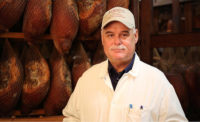Despite the significant upheaval taking place in Washington D.C. and throughout the country, there are a few rock-solid constants. Consumers will continue to eat, and while the type of food they will buy is largely dependent on their financial stability, protein consumption remains steady.
Todd Southerland, senior vice president and food & agribusiness industry manager at SunTrust Bank, says that price is the ultimate driver for “share of stomach” — how each protein fares relative to competing meats.
“Regardless of the economic environment, price is the ultimate driver for protein substitution, and protein prices cycle as supplies change,” he says. “But it’s not that simple, because price also has to be viewed from the perspective of relative value. For example, in most any environment, the average price of chicken is lower than the average price of beef, but a cut of steak is typically viewed as a premium item relative to a chicken breast. The price spread between the two, which is very fluid, is more of a driver than the price points viewed in isolation. And this fluidity can be a vessel for changes in consumption as trends change.”
With a shortage in beef supplies over the last decade, retail beef reached record highs. However, a slowly rebuilding cattle herd in 2017 should bring increased interest in beef at the expense of chicken. Southerland also is very bullish on the egg market for the coming year, and he says that pork should perform well, because ample supplies have made it an extremely affordable protein for consumers.
In a market that seems friendly for the meat and poultry industry, smaller companies, in spite of their typically higher price points, still have the advantages of being nimble and unopposed to shorter production runs for highly customized products. Those products may not come in large quantities, but they are valuable in the marketplace.
“Larger processors compete on the basis of price and profitability, which is driven by volume, so maintaining a low cost structure is important,” Southerland notes. “Smaller operators that cater to accounts with unique product demands will continue to have an advantage among customers that are willing to pay for customization. This may come in the form of product weights, specialty cuts/forms, specific recipes for marinating or cooking, or several other attributes that ultimately differentiate the product in the mind of the consumer or contribute to consistency or ease of handling and preparation.”
Smaller companies once had the advantage of being able to supply specialty proteins, such as antibiotic-free meats, that the larger companies didn’t. However, due to increased consumer demand in ABF products, those items are now being mass produced. Organic meat, also an important market for smaller companies, seems to have plateaued, and Southerland notes two reasons for it.
“First, we’ve reached a certain level of critical mass in retail distribution with the struggles experienced by retailers such as Whole Foods,” he says. “Organic meat was pushed to the consumer through specialty retail models, and that market has exhibited a finite level of demand for the time being.
“Second, the broader marketing platform for specialty meat, driven largely by fast food and fast casual chains, has focused on ABF products, which has taken a lot of the focus away from organic in terms of gaining new consumers,” Southerland adds.
The ABF demand will continue to grow, he says. It’s an easier business model for processors and producers for several reasons. For one, the processing cost of ABF is not nearly as large as the cost associated with organic production. For another, key customers for the meat industry are making these conversions.
“Chipotle, as an example, has long been committed to ABF proteins, but that particular customer was not large enough to move the needle for most processors,” he explains. “Now that the movement is expanding with larger, key account customers on board, e.g., McDonald’s and Chick-Fil-A, processors are more responsive.”
Southerland does point out that much of the change is driven by availability versus demand. The consumer is responding positively to the ABF movement because the inherent price increases have yet to be realized. While he does expect the growth in ABF to continue as more processors join the movement, costs will increase, and consumer pricing will undoubtedly follow.
“There will be a point at which consumers realize the economic realities associated with specialty protein, and those higher price points may put pressure on demand,” he says.
The meat industry will continue to evolve, and Southerland sees an increased focus on the manner in which livestock is raised. This pressure will apply to every aspect of the life cycle, including husbandry and raising practices, diets and medications, humane treatment and slaughter, quality of life considerations, environmental and waste impacts and traceability of the entire process from feed to farm to table.
“So many aspects of this process, while overseen to a degree by integrators or processors, are ultimately controlled by farmers,” he says. “I think this warrants a renewed focus on the downstream attributes of livestock production, which cannot be ignored. Quality and safety are not confined to the manufacturing plant but rather are equally attributable to the manner in which each herd or flock is grown.”
“I think smaller meat processors would be wise to view and reward their livestock suppliers in the same way that they strive to be treated by their customers. Stability in your grower base can be a hugely positive contributor to your operation in so many respects,” Southerland says.
This article previously ran in the February edition of the Independent Processor’s Prime Cuts eNewsletter. To sign up for our monthly email, go to http://www.provisioneronline.com/enewsletters







